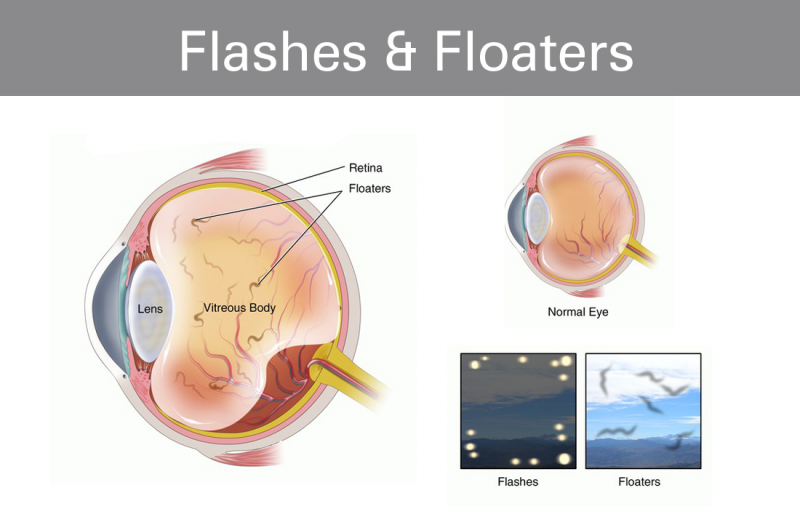How Apple Watch's Sleep Apnea Detection Can Save Lives

The Alarming Reality of Sleep Apnea Sleep apnea is a widespread and often underestimated health issue that affects millions of people worldwide, posing significant risks to overall well-being and quality of life. Prevalence and Impact Sleep apnea affects an estimated 20-30 million people in the US, causing frequent pauses in breathing during sleep. These pauses can occur multiple times throughout the night, leading to fragmented sleep patterns and a host of associated health problems. Consequences of Untreated Sleep Apnea Untreated sleep apnea can lead to loud snoring, fatigue, and increased risk of heart disease, diabetes, and stroke. The chronic sleep deprivation resulting from sleep apnea can also impair cognitive function, mood, and motor function, affecting daily activities and relationships. Emerging Concerns: The Sleep Apnea-Epilepsy Connection Recent studies suggest a potential link between sleep apnea and epilepsy. Researchers have found that individuals with sleep apnea are more likely to experience seizures, particularly nocturnal seizures, due to the disrupted sleep patterns and decreased oxygen levels. This connection underscores the need for comprehensive diagnosis and treatment of sleep apnea. The Silent Killer: Why Early Detection Matters Sleep apnea often goes undiagnosed, as symptoms can be subtle or mistaken for other conditions. The lack of awareness and diagnosis can have devastating consequences, making early detection crucial. Innovative technologies like Apple Watch's sleep apnea detection feature offer a promising solution, empowering individuals to take proactive steps toward diagnosis and treatment. A Wake-Up Call: Embracing Life-Saving Technology The integration of sleep apnea detection in wearable devices like Apple Watch represents a significant leap forward in health monitoring. By harnessing the power of technology, individuals can now monitor their sleep patterns, identify potential issues, and seek medical attention earlier. This timely intervention can save lives, improving the quality of life for millions affected by sleep apnea.
The Game-Changer: Apple Watch's Sleep Apnea Detection Feature
Apple Watch Series 10, Series 9, and Apple Watch Ultra have revolutionized the wearable technology industry with their built-in sleep apnea detection feature. This groundbreaking innovation has the potential to save lives by identifying potential sleep apnea episodes, enabling users to seek medical attention before it's too late.
Advanced Algorithm for Enhanced Accuracy
This feature utilizes advanced algorithms to track breathing patterns and detect potential sleep apnea episodes. By monitoring the user's respiratory rate and other vital signs during sleep, the Apple Watch can identify irregularities that may indicate sleep apnea.
Access to Detailed Sleep Data and Alerts
Users can access detailed sleep data, including information on sleep duration, quality, and potential sleep apnea events. The Apple Watch also sends alerts for potential sleep apnea events, empowering users to take control of their sleep health and seek medical attention if necessary.
This feature has the potential to transform the lives of millions of people worldwide who suffer from undiagnosed sleep apnea. With the Apple Watch's sleep apnea detection feature, users can enjoy a better quality of life, improved overall health, and enhanced well-being.
Understanding Sleep Apnea: Causes, Symptoms, and Risk Factors
Sleep apnea is a serious sleep disorder that affects millions of people worldwide, causing them to stop breathing for short periods during sleep. There are two main types of sleep apnea: obstructive sleep apnea (OSA) and central sleep apnea (CSA).
Types of Sleep Apnea
Obstructive sleep apnea (OSA) is the most common type, accounting for approximately 80% of all sleep apnea cases. OSA occurs when the airways are blocked, causing breathing to stop for short periods. This blockage is usually due to the collapse of the soft tissue in the throat, such as the tongue or uvula.
Central sleep apnea (CSA) is less common and occurs when the brain fails to send the necessary breathing signals to the diaphragm and other respiratory muscles. This can be caused by a variety of factors, including brain tumors, stroke, or spinal cord injuries.
Risk Factors
Certain factors can increase the risk of developing sleep apnea. These include:
- Obesity: Excess weight can cause fat to accumulate in the throat, blocking the airways.
- Hypertension: High blood pressure can increase the risk of developing sleep apnea.
- Smoking: Smoking can cause inflammation and swelling in the upper airways, increasing the risk of sleep apnea.
- Family History: Having a family history of sleep apnea can increase an individual's risk.
Other risk factors include age, gender (men are more likely to develop sleep apnea than women), and certain medical conditions such as diabetes and heart disease.
Breaking the Silence: Seeking Help for Sleep Apnea Sleep apnea is a serious health condition that affects millions of people worldwide, yet it often remains undiagnosed and untreated. The integration of sleep apnea detection in Apple Watch is a significant step towards addressing this issue. However, recognizing the symptoms and seeking medical help is crucial to managing the condition effectively. Recognizing the Warning Signs If you or a loved one experiences any of the following symptoms, it's essential to consult a healthcare professional: Loud snoring, choking, or gasping during sleep Insomnia or difficulty staying asleep Daytime fatigue, irritability, or mood swings Morning headaches or dry mouth Difficulty concentrating or memory lapses Diagnosing Sleep Apnea Diagnosing sleep apnea typically involves: Home Sleep Studies: Overnight sleep studies conducted in the comfort of your own home, using portable devices to monitor breathing patterns and oxygen levels. In-Clinic Tests: Polysomnography (PSG) or sleep studies conducted in a sleep clinic or hospital setting, providing comprehensive data on sleep stages, breathing, and oxygen levels. Treatment Options Fortunately, sleep apnea is a treatable condition, and various options are available: Continuous Positive Airway Pressure (CPAP) Machines: Devices that deliver constant airflow to keep airways open during sleep. Oral Appliances: Custom-made mouthpieces that adjust the position of the lower jaw and tongue to prevent airway obstruction. Lifestyle Changes: Weight loss, regular exercise, smoking cessation, and avoiding sleeping on your back. The Role of Apple Watch The Apple Watch's sleep apnea detection feature serves as a vital wake-up call, encouraging users to seek medical attention. By monitoring sleep patterns and detecting potential sleep apnea episodes, this feature can: Identify individuals at risk and prompt them to consult a healthcare professional. Provide valuable data to support diagnosis and treatment planning. Encourage users to adopt healthy sleep habits and lifestyle changes. By breaking the silence surrounding sleep apnea and seeking help, individuals can take the first step towards better health and improved well-being.
The Future of Sleep Health: Technology and Awareness
The realm of sleep health is undergoing a significant transformation, driven by remarkable advancements in wearable technology and AI-powered diagnostics. These innovations are not only enhancing our understanding of sleep patterns but also empowering individuals to take proactive control of their sleep well-being.
Revolutionizing Sleep Health through Wearable Technology
Wearable devices, such as the Apple Watch, are equipped with cutting-edge sensors that monitor vital signs and detect potential sleep disorders, including sleep apnea. This technology enables users to track their sleep patterns, identify anomalies, and seek medical attention if necessary. The seamless integration of these devices into daily life facilitates continuous monitoring, fostering a deeper understanding of sleep health.
AI-Powered Diagnostics: A Game-Changer in Sleep Health
Artificial intelligence plays a pivotal role in analyzing data collected from wearable devices, identifying patterns, and providing insights into sleep quality. AI-powered diagnostics can detect sleep apnea and other disorders with remarkable accuracy, enabling early intervention and treatment. This synergy between wearable technology and AI has the potential to revolutionize sleep health, making it more accessible and personalized.
Increased Awareness and Education: Key to Reducing Sleep Apnea-Related Deaths
Despite the prevalence of sleep apnea, awareness and understanding of this condition remain limited. Educating individuals about the risks, symptoms, and consequences of untreated sleep apnea is crucial. By promoting awareness and encouraging open discussions, we can reduce the stigma associated with sleep disorders and empower individuals to seek help. Increased awareness will, in turn, drive early detection and treatment, saving lives and improving quality of life.
Early Detection and Treatment: Vital for Improving Quality of Life
Early detection and treatment of sleep apnea are critical for preventing long-term consequences, such as cardiovascular disease, diabetes, and cognitive impairment. Timely intervention can significantly enhance quality of life, enabling individuals to enjoy restful sleep, improved physical health, and enhanced mental well-being. By prioritizing sleep health, we can unlock a future where individuals thrive, unencumbered by the debilitating effects of sleep disorders.














Comments ()